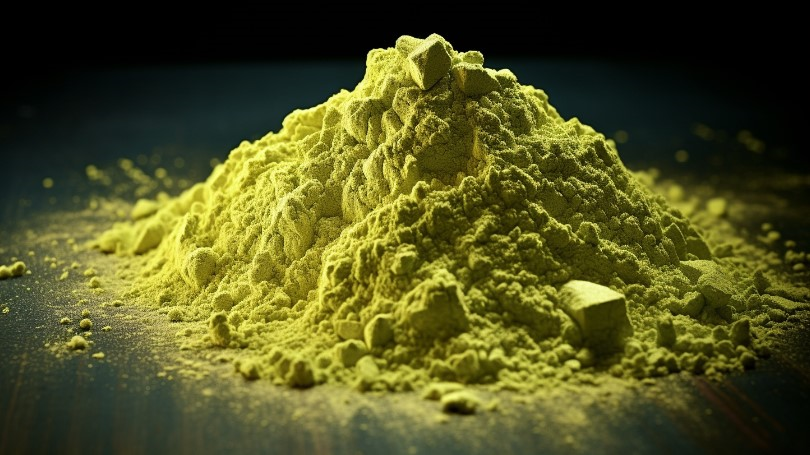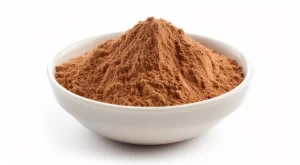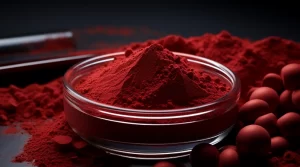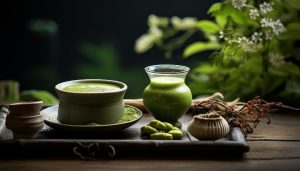ケルセチンを豊富に含む10の食品!

We’ve all heard the health claims, “An apple a day keeps the doctor away,” but do we know why? In addition to being a great source of fiber and vitamins, apples are also a great source of health-promoting polyphenols like quercetin.
If you haven’t heard of ケルセチン, you’re certainly not alone; Zinc and vitamins C and D are often instrumental in supporting immune health. Despite its strange name, quercetin is probably the most underrated nutrient in your diet. Its benefits go far beyond boosting the body’s natural defenses.
So what is quercetin – and what other foods can you find it in besides apples?
何なのか? ケルセチン?
Quercetin belongs to a group of plant compounds called dietary flavonoids, which are polyphenols that form the basis of many different plant pigments. That’s why you always hear the advice to “eat the rainbow” – those brightly colored fruits and vegetables that get their bold hues from health-promoting flavonoids. Quercetin really stands out among other flavonoids, though, because it has many unique and beneficial biological properties.
Like vitamin C, quercetin is an antioxidant, which means it helps defend against free radicals that can cause oxidative stress. If we all need less of something to maintain our health, it’s free radicals!
5 Benefits of ケルセチン
How, specifically, does quercetin benefit your health? Here are five important ways this flavonoid can support you from head to toe:
Healthy immune system
Quercetin is an antioxidant that certainly belongs on our list of immune support supplements. In a large randomized controlled trial, taking quercetin for 12 weeks (1000 mg per day) produced beneficial effects compared to placebo, including fewer days experiencing immune challenges related to the upper respiratory tract.
Promote a healthy inflammatory response
– Inflammation is a normal part of the human experience; What matters is whether your body responds in a healthy way… Quercetin seems to promote this. In a meta-analysis of clinical trials, quercetin supplements in subgroups were associated with maintaining already-healthy levels of cytokines, such as C-reactive protein.
Healthy cells
– Senescent cells are old cells that accumulate with aging. Quercetin is increasingly being recognized as an anti-aging drug, which means it helps remove these unwanted cells – leaving healthy, young, functioning cells to continue working.
Support already healthy blood pressure
A meta-analysis of clinical trials found that supplementing quercetin with 500 mg or more helped maintain blood pressure within a healthy range.
Already healthy blood sugar support
Another study found that the same dose of quercetin also supported already-healthy blood sugar levels.
10 ケルセチン rich Foods
So now that you know how many health benefits quercetin can provide, the question is – how can you get more of this dietary flavonoid on your plate? Check out the food list below to discover some delicious ways to increase your intake of the most underrated nutrients we can think of! (Note that, as with produce, the nutrient content per serving will vary from crop to crop.)
Apple
– 5mg per 100g (about half an apple). Apples are probably the most common food and a good source of quercetin. (And, if there’s any food on our list that’s probably already in most people’s diets, it’s apples!)
Berries
Depending on the variety, flavonoid-rich cranberries may contain as much as 22 mg per 100 grams, while blueberries contain 7-14 mg per 100 grams (roughly equivalent to one cup). Berries are also antioxidants (beware, free radicals!). And a great source of polyphenols called anthocyanins, which have a wide range of health benefits.
Dark grapes
– 3 mg per 100g (typical bundle). These fruits are a great source of many polyphenols, most notably resveratrol, which may target anti-aging pathways. There are about 3mg of quercetin in every 100ml of red wine, which is slightly less than half a cup. However, Shiraz may contain higher levels. White wines from green grapes contain, on average, fewer polyphenols (including quercetin) than red wines.
Red onion
– 39 mg per 100g (about one small onion). All Onions contain quercetin; But because of their pigment, red Onions have the highest levels of flavonoids, including quercetin. Cooking method can reduce quercetin content. Therefore, do not boil and fry to get the maximum flavonoid intake from these spicy vegetables.
Broccoli (raw)
– 3mg per 100g (small bowl). Broccoli and other cruciferous vegetables are a rich source of vitamins and minerals, in addition to containing compounds that promote cell health, such as sulforaphane and indole-3-methanol. And, they’re also a good source of extra antioxidants… All the more reason to add them to your diet.
Kale
– 8 mg per 100 grams (about one cup). Like broccoli, kale is a leafy green vegetable that benefits cell health. In addition, kale is a great source of the carotenoids lutein and zeaxanthin, which are concentrated in the retina and support healthy vision.
Other food sources of quercetin
Capers
– 365 mg per 100g (usually 2-3 servings) capers are the richest food source of quercetin per gram! Capers are the buds of capers before they bloom. They are commonly used as condiments, most commonly in salads and salmon. While capers are not currently a popular food in the United States, it is considered a superfood and is generating more interest.
Dill
– 55mg per 100g (2-3 servings are usually required) This herb belongs to the same family as parsley and celery, but has a feathery texture. Use it as a decoration not only for taste, but also to create a pleasant aroma.
Buckwheat
– Up to 36 mg per 100 grams (about a full cup). Not only is buckwheat a great way to increase your quercetin intake, but it’s also a great alternative to wheat if you don’t eat gluten foods. (There may be the word “wheat” in there, but don’t be fooled!) Buckwheat works well as a base for mixing food bowls. If you’re craving something salty, try sauting other plant-based foods or adding sweeter quercetin rich foods like berries or other fresh fruits for a breakfast porridge worth waking up to.
Green Tea
– 2.63 mg per 100 ml (less than half a cup). Green tea also provides large amounts of a polyphenol called EGCG, which helps maintain cholesterol and glucose levels within normal ranges, supports brain and nerve health, and provides a wide range of cellular health support. If you’re still not convinced, green tea also has excellent antioxidant properties… So drink up!
Can I get enough quercetin in my diet?
On average, the American diet provides only about 6-18 mg of quercetin per day. Eating more quercetin rich foods can help you exceed your average intake and provide additional health benefits due to its antioxidant content, but for maximum benefit, a good quercetin supplement will provide clinically studied doses and delivery.
How to choose a quality quercetin supplement?
Quercetin itself is not highly bioavailable, which means it is not easily absorbed. However, the researchers found that when quercetin is encapsulated in a plant-derived phospholipid complex called a phospholipid complex, it can significantly improve the bioavailability of quercetin. This in turn means that greater quercetin effects can be obtained at lower doses.
Life Extension offers this new plant complex wrapped quercetin supplement with super absorbability, which can also be taken with quercetin dihydrate to maximize the biological activity of these nutrients.
Does quercetin have side effects?
As with many supplements, quercetin is not known to have side effects. The FDA considers quercetin to be generally considered safe in doses up to 500 mg; However, doses much higher than this have also been shown to be safe.
How much quercetin can I take?
In one clinical trial, 2000 mg of quercetin per day was used safely for one week. Always follow the dosage and instructions on the bottle.
What other dietary supplements can be used with quercetin?
• Quercetin and other aging drugs
Certain immune supplements work best in combination. Studies have shown that taking quercetin with other aging drugs such as fisetin, theaflavins, and apigenin may have a synergistic effect in removing senescent cells.
• Quercetin with vitamin C
Quercetin and vitamin C are commonly found together in many foods, especially citrus fruits, and a review of studies suggests that the co-administration of vitamin C and quercetin may play a synergistic immune defense role.
• Quercetin containing zinc
Zinc is known for its immune-supporting properties and can complement the immune benefits of quercetin. One study found that quercetin acts as a zinc ion carrier, transporting zinc cations through the plasma membrane; This study suggests quercetin may help increase zinc absorption.
参考文献
• Chakrawarti, L et al. “The therapeutic effect of EGCG: patent examination”, treat patent expert opinion, in August 2016, https://pubmed.ncbi.nlm.nih.gov/27338088/
Coyle, d. “sulforaphane: benefits, side effects and food sources”, Healthline, in February 2019, HTTPS: / / www.healthline.com/nutrition/sulforaphane
• Heinz, S. et al. “Supplementary quercetin and upper respiratory tract infection: a randomized clinical trial community”, pharmacology research, in May 2010, https://www.ncbi.nlm.nih.gov/labs/pmc/articles/PMC7128946/
• Husam Dabbagh-Bazarbachi et al. “Zinc ionophore activity of quercetin and epigallocatechin gallate: from Hepa 1-6 cells to liposome models.” Journal of agricultural and food chemistry, in July 2014, https://pubs.acs.org/doi/abs/10.1021/jf5014633
• Kirkland, JL and T Tchkonia. “Senolytic drugs: From Discovery to transformation.” Internal medicine journal, in August 2020, https://www.ncbi.nlm.nih.gov/pmc/articles/PMC7405395/
• Kokotou, MG et al. “High-resolution mass spectrometry studies of sulforaphane and indole-3-methanol in broccoli.” Food chemistry, in December 2017, https://pubmed.ncbi.nlm.nih.gov/28764036/
• Ostadmohammadi, V et al. “Supplementary quercetin glycemic control in patients with metabolic syndrome and related disorders: systematic review of randomized controlled trials and meta-analysis”, phytotherapy research, in May 2019, HTTPS: / / pubmed. Ncbi. While NLM. Nih. Gov / 30848564 /
• Serban, MC, etc. “The effects of quercetin on blood pressure: systematic review of randomized controlled trials and meta-analysis”, the journal of the American heart association, in July 2016, https://pubmed.ncbi.nlm.nih.gov/27405810/
• Walsh, RP et al. “Kale and other vegetables, carotenoids content changes: before and after harvest impact review”, journal of agricultural and food chemistry, in November 2015, https://pubmed.ncbi.nlm.nih.gov/26477753/
• “Phenol Explorer.” http://phenol-explorer.eu/
• “Vitamin C – Summary”, Linus Pauling Institute. https://lpi.oregonstate.edu/mic/vitamins/vitamin-C
Quercetin supplier: www.backvita.com
Eメール:[email protected]
電話番号+86 (029) 8187 2325



